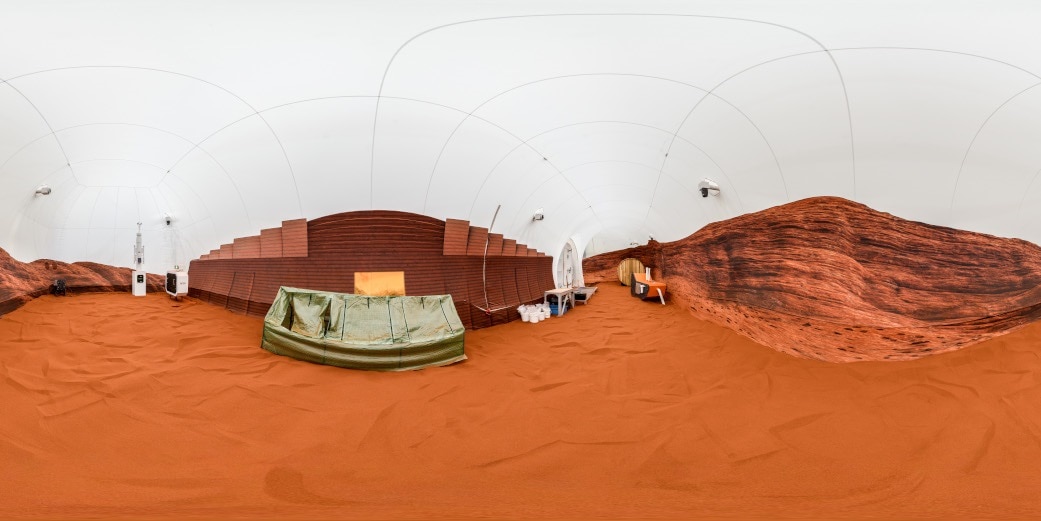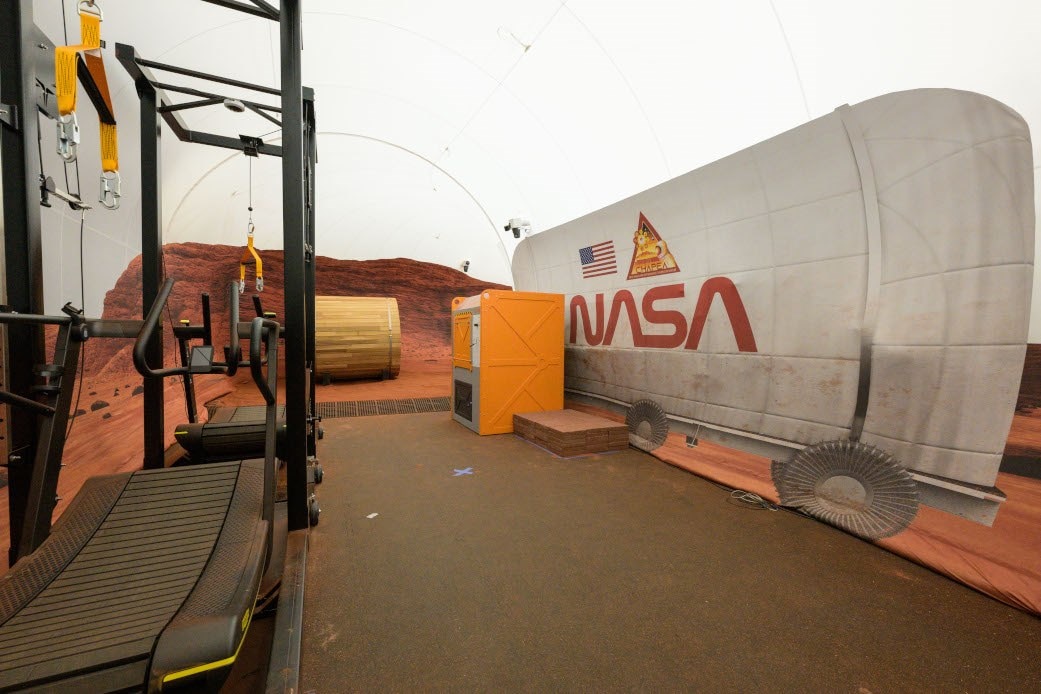
The sandbox outside NASA's Mars Dune Alpha structure contains red sand. (Image Credit: NASA)
NASA has built Mars Dune Alpha, a 1,700 sq. foot structure designed for four participants to see how they manage in Mars-like conditions. In June, these volunteers will start living inside the 3D-printed structure for a year, growing food, exercising, and performing various experiments. NASA's researchers are trying to make it very similar to the red planet so they can understand how spending a year isolated in that environment affects human health.
"We're really looking at how the crew performance and health changes based on realistic Mars restrictions and lifestyle of the crew members," said Raina MacLeod, CHAPEA deputy project manager at Johnson. "So, the lifestyle is what we're trying to simulate by setting up a realistic environment and workload for the CHAPEA crew."

Each volunteer will have living quarters inside the structure. (Image Credit: NASA/Bill Stafford)
The structure has four living quarters for the crew members and a bathroom, shower, and toilet. It also includes a medical station, workstations, and a lounge area containing board games such as Monopoly and Settlers of Catan: Starfarers edition, a Super Nintendo, and PlayStation 3. The participants are growing everyday food, including tomatoes and leafy greens. NASA can then determine how well crops may grow on Mars.

360-view of the 1,200-square-foot sandbox. (Image Credit: NASA/Bill Stafford)
There's also a 1,200-square-foot sandbox outside the structure filled with red sand and a Mars-like landscape. Volunteers wearing spacesuits access this area by moving through a fake airlock. This is where simulated missions called Marswalks take place. The inhabitants work in pairs to conduct those missions and use VR technology, making it appear as if they're walking on Mars' surface.
I imagine the real surface of Mars would give the residents the feeling of space. But this feels a bit confined.

This is the geology workstation for rock sample analysis. (Image Credit: NASA/Bill Stafford)
Some expeditions involve identifying, photographing, and analyzing rocks. Meanwhile, site evaluation skills may come into play for constructing additional structures on Mars. Other tasks include maintaining the structure or removing dust from the outdoor solar panels. The crew can use the treadmills and VR technology to hike in a simulated environment, collect resources, and conduct research. NASA is also monitoring the participants for signs of mental and physical distress.

The sandbox has a treadmill along with VR technology. (Image Credit: NASA/Bill Stafford)
In addition, NASA scientists, who are designing products for space use, observe the participants; garbage. A 22-minute communication delay between the inhabitants and those in the outside world will take effect to make the conditions even more realistic.
The space agency is implementing other stressors rather than isolation. That includes equipment failure, heavy workloads, and resource limitations. This effort makes the conditions of living on Mars more realistic. All the volunteers must save resources accordingly and won't have a lot of food. Participants must send in frequent blood samples and must perform psychological surveys. Of course, the crew members can leave the structure whenever they'd like and end their experiments. If that happens, then NASA can bring in alternate volunteers.
I feel this might go the way of Biosphere 2.
Have a story tip? Message me at: http://twitter.com/Cabe_Atwell
